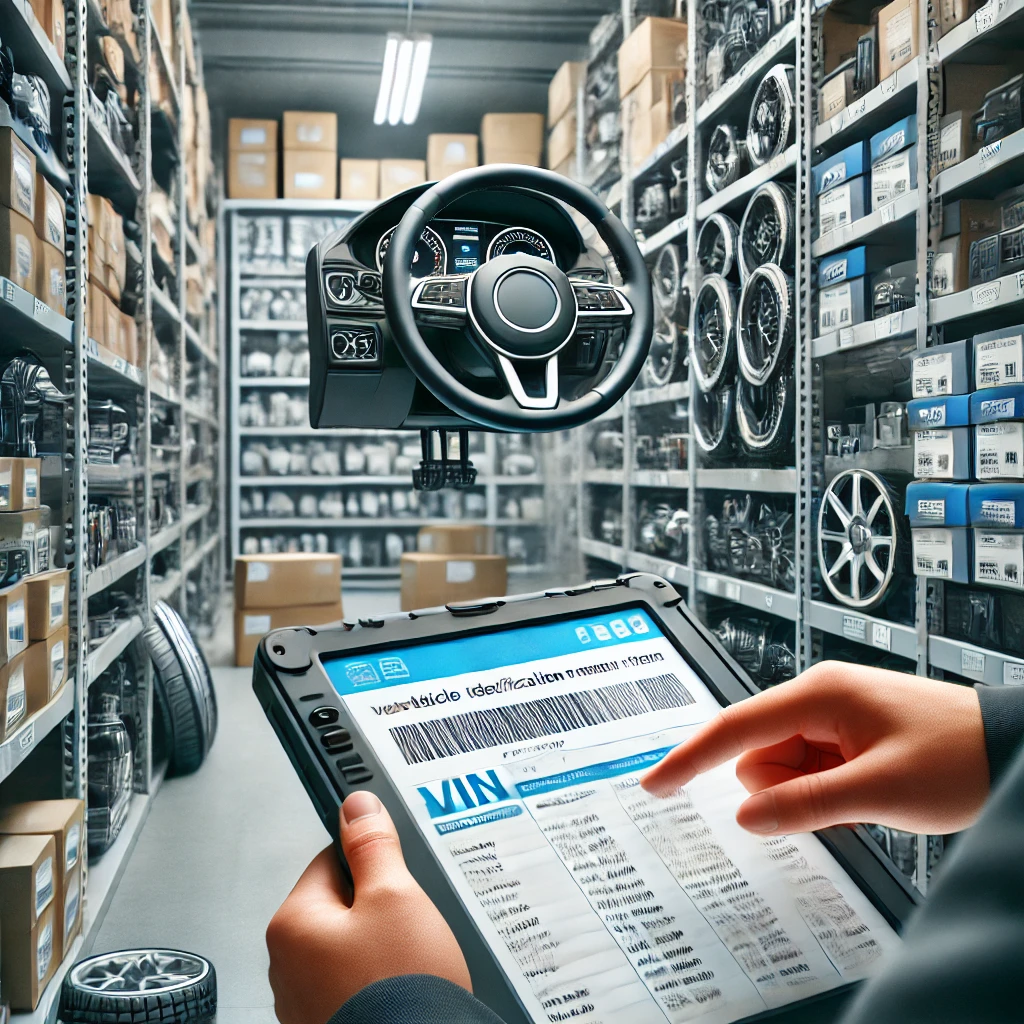Finding Auto Parts by VIN: A Complete Guide

Understanding the VIN Based chassis number
Before diving into the process of finding parts, let’s revisit what a VIN is and why it’s so valuable for parts identification.
What is a VIN?
A Vehicle Identification Number (VIN) is a unique 17-character code assigned to every motor vehicle when it’s manufactured. This code serves as the vehicle’s DNA, containing crucial information about its make, model, year, and specifications.
Why Use VIN for Parts Lookup?
Using a VIN to find auto parts offers several advantages:
- Accuracy: Ensures you get the exact part designed for the specific vehicle.
- Efficiency: Eliminates guesswork and reduces the likelihood of ordering incorrect parts.
- Comprehensive Information: Provides details about the vehicle’s specifications that might affect part compatibility.
- Time-Saving: Streamlines the parts lookup process, especially for vehicles with multiple trim levels or option packages.
The Process of Finding Auto Parts by VIN

Step 1: Locate the VIN
The VIN can typically be found in several locations:
- Driver’s side dashboard, visible through the windshield
- Driver’s side door jamb
- Vehicle registration and insurance documents
- Vehicle title
Step 2: Decode the VIN
While not always necessary for parts lookup, understanding what the VIN means can be helpful:
- Characters 1-3: World Manufacturer Identifier
- Characters 4-8: Vehicle Descriptor Section (includes model, body type, engine type, etc.)
- Character 9: Check Digit
- Character 10: Model Year
- Character 11: Assembly Plant
- Characters 12-17: Production Sequence Number
Step 3: Use Online VIN Lookup Tools
Many auto parts retailers and manufacturers offer online VIN lookup tools:
- Manufacturer Websites: Often provide the most accurate and detailed information.
- Auto Parts Retailer Websites: Many large retailers have VIN lookup features integrated into their parts search.
- Third-Party VIN Decoders: Can provide additional details about the vehicle’s specifications.
Step 4: Navigate Parts Catalogs VIN Based chassis number
Once you’ve entered the VIN:
- Select the appropriate system or category (e.g., Engine, Transmission, Brakes).
- Choose the specific part you need.
- Verify compatibility, especially for parts that may have changed mid-production year.
Step 5: Cross-Reference
Even after using the VIN, it’s wise to:
- Double-check the part number against the vehicle’s specific requirements.
- Consult with a parts professional if there’s any uncertainty.
Leveraging VIN-Based Parts Lookup with Linbis Logistics Software
Linbis’s advanced logistics software is designed to streamline the process of finding parts by VIN:
- Integrated VIN Scanning: Quickly capture VIN data using mobile devices or dedicated scanners.
- Automated Parts Matching: Our system can automatically suggest compatible parts based on the scanned VIN.
- Inventory Management: Track which parts are compatible with which vehicles in your fleet or inventory.
- Predictive Maintenance: Set up automated reminders for part replacements based on vehicle-specific data.
- Supplier Integration: Connect directly with parts suppliers to check availability and place orders.
- Historical Data Tracking: Keep records of parts used for each vehicle, making future replacements easier.
- Custom Reporting: Generate reports on parts usage, compatibility, and inventory levels across your vehicle fleet.

Best Practices for VIN Based chassis number
To maximize the benefits of using VINs for parts lookup in your operations, consider these best practices:
- Maintain Updated VIN Databases: Regularly update your VIN decoding databases to include information on new models and changes.
- Train Staff: Ensure your team understands how to properly use VIN-based lookup systems and interpret the results.
- Implement Quality Control: Double-check VIN-suggested parts against physical vehicle inspection when possible.
- Keep Records: Maintain a database of successful parts matches for future reference.
- Stay Informed About Recalls: Use VIN lookups to stay updated on any recalls or parts replacements recommended by manufacturers.

Challenges in VIN-Based Parts Lookup
While using VINs for parts lookup is generally reliable, there are some challenges to be aware of:
- Mid-Year Changes: Some manufacturers make changes to vehicles mid-production year, which may not be reflected in the VIN.
- Aftermarket Modifications: VINs don’t account for any aftermarket modifications made to the vehicle.
- Older Vehicles: For vehicles manufactured before 1981, VINs may not follow the standardized 17-character format.
- International Variations: Vehicles manufactured for different markets may have different specifications despite similar VINs.

The Future of VIN-Based Parts Lookup in Logistics
As technology advances, we can expect to see developments in VIN-based parts lookup:
- AI-Powered Recommendations: Machine learning algorithms could provide more nuanced parts suggestions based on VIN data combined with vehicle history.
- Augmented Reality Integration: AR could be used to visualize parts compatibility and installation procedures based on VIN data.
- Blockchain for Parts Verification: Implementing blockchain technology could create tamper-proof records of parts history linked to VINs.
- Predictive Analytics: Advanced analytics could predict parts failures and suggest proactive replacements based on VIN-specific data and usage patterns.
Conclusion: Mastering VIN Based chassis number
Understanding and effectively using VIN-based parts lookup is a critical skill in modern automotive logistics and management. With Linbis’s advanced software, you can transform this process into a powerful tool for enhancing efficiency, reducing errors, and driving strategic decision-making in your automotive-related operations.
By mastering the intricacies of finding auto parts by VIN, logistics professionals can stay ahead in an industry where precision and speed are paramount. Whether you’re managing a large fleet, operating a parts distribution center, or running an auto repair shop, the ability to quickly and accurately find the right parts using VINs is invaluable.
Ready to revolutionize your approach to auto parts management and logistics? Discover how Linbis can help you harness the full potential of VIN-based parts lookup in your operations. Contact us today for a personalized demonstration and take the first step towards a more efficient, data-driven automotive logistics future.
